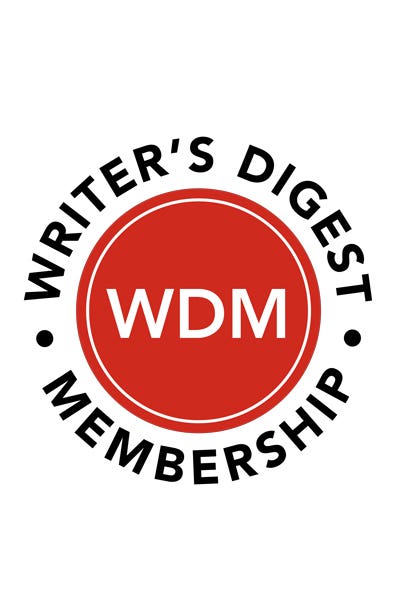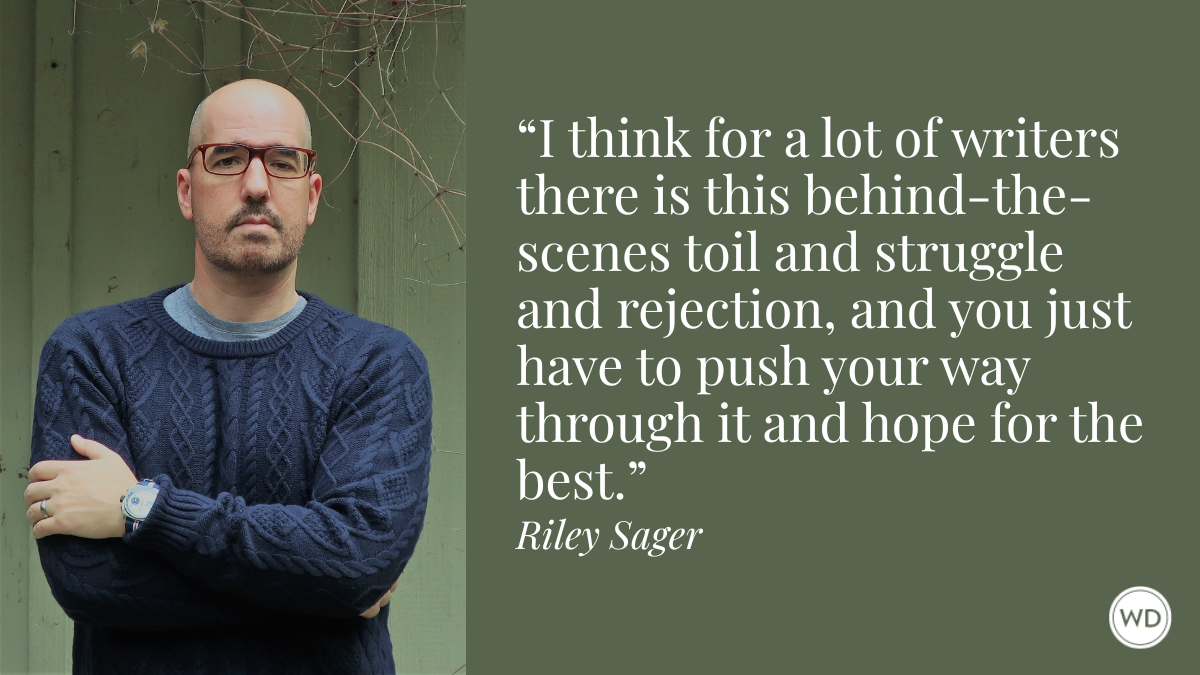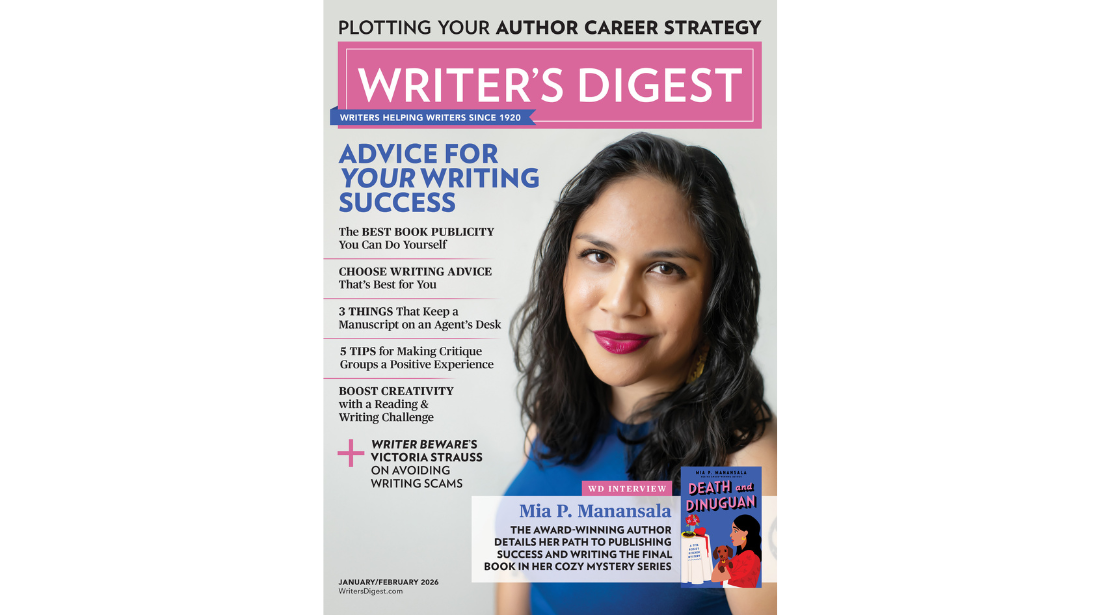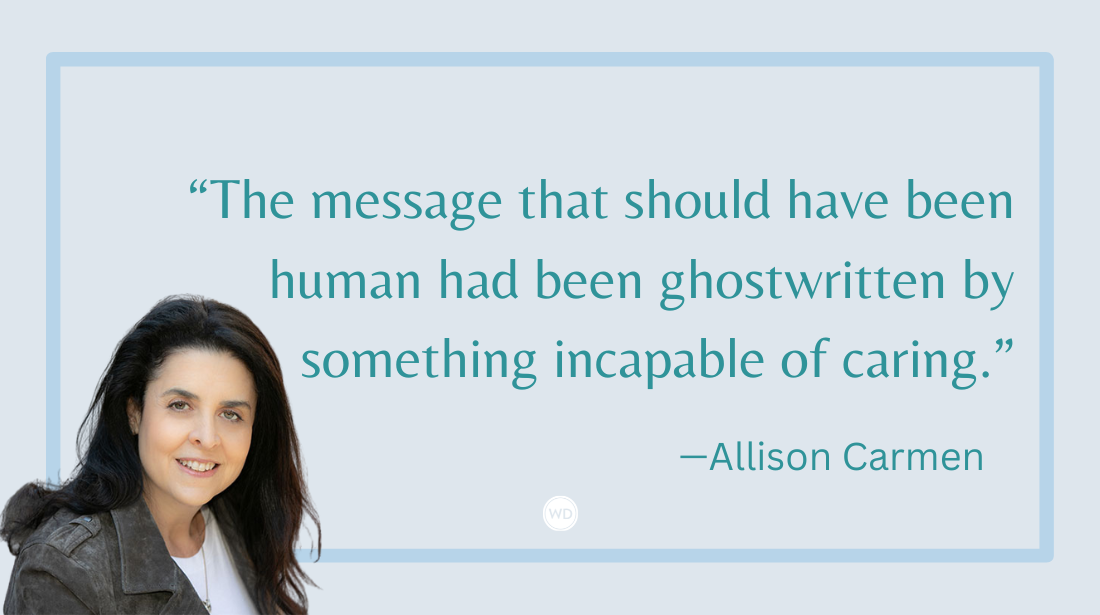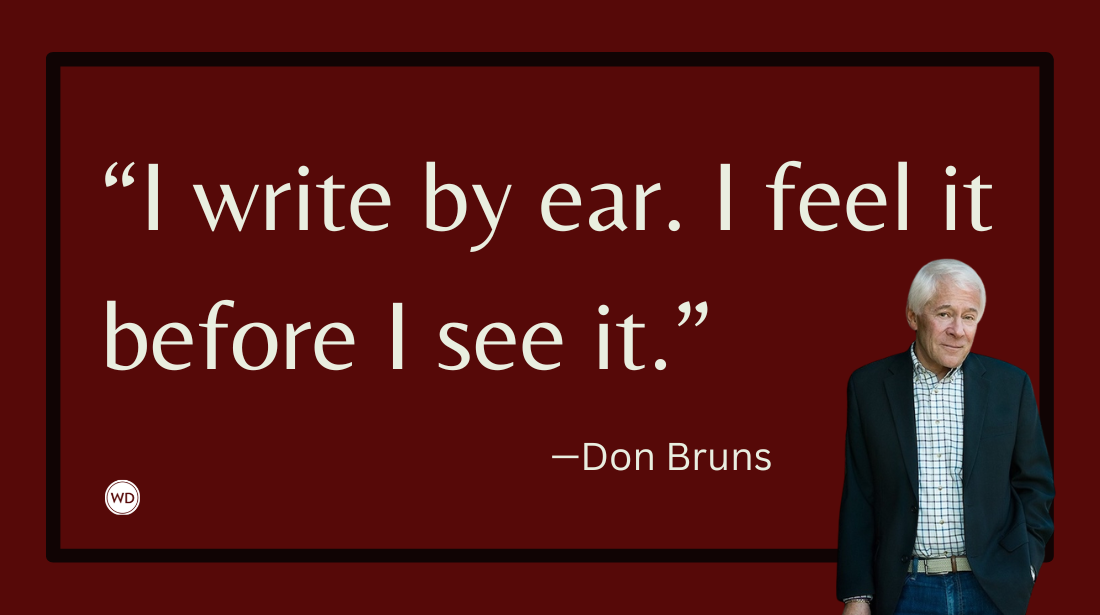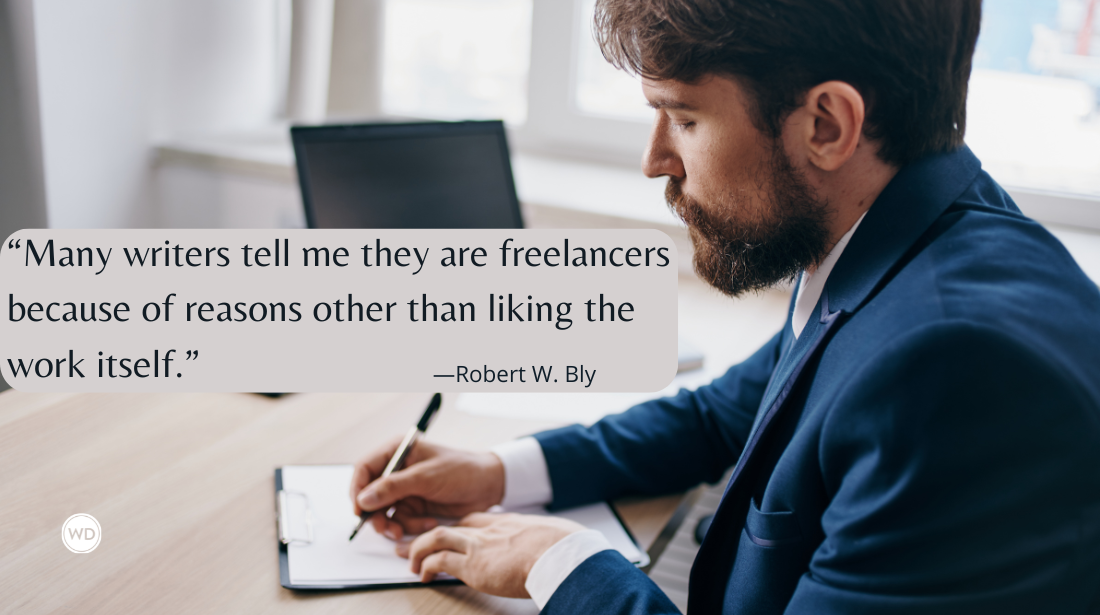The WD Interview: Laurie Halse Anderson
The National Book Award finalist explains how to know when a story has legs and why research was a critical part of the writing process for her newest middle-grade novel.
Laurie Halse Anderson’s newest book didn’t start as a middle-grade novel, though that’s what it would eventually become. It started as a nonfiction picture book about the history of inoculations in the U.S. and around the world, an idea itself sparked when Anderson was recovering from an early case of COVID-19 in March of 2020 and considering what the HBO “John Adams” series “fudged” in their depiction of the process. But, as many traditionally published authors will tell you, working with a good editor can be transformative for a story. “I turned in a rough draft of that originally,” Anderson said, “and my editor, Caitlyn Dlouhy—who’s a genius, for the record—she said, ‘You know, I think this might be a novel.’”
Rebellion 1776 tells the story of Elsbeth Culpepper, a 13-year-old girl working in a Loyalist judge’s house when Patriot cannon fire marks the start of the Siege of Boston. When Elsbeth’s only living relative, her father (her mother and siblings died in an earlier smallpox epidemic), goes missing and the judge is banished from Massachusetts with other Loyalists, Elsbeth has to figure out how to survive on her own. To avoid the orphanage, Elsbeth finds work as a maid for a wealthy family, though things take a turn for the worse when smallpox finds its way into Boston and debate rages about the risks and benefits of inoculation.
After the conversation with Dlouhy, Anderson spent much of the five intervening years intensely researching the lives of people living in Boston in 1776, a great deal of which made it into the novel. “When I was trying to figure out what furniture would be in the house that’s a central setting in the book, I went to the probates, meaning the inventories made of a dead person’s estate of wealthy Bostonians so that I could see the kind of furniture they [had],” Anderson told WD. “But I was also interested in trying to find out about the lives of ordinary people. I spent months learning about the Almshouse in Boston. How did the town take care of people when the breadwinner of the family was dead or very ill and the children had to be fed? What kind of choices did families have or didn’t have when it came to the care of their kids during this sort of crisis?”
Anderson doesn’t just write picture books or deeply researched middle-grade historical fiction. She’s well-known for her contemporary YA novels, including National Book Award finalist Speak, ALA Best Book for Young Adults and New York Times bestseller Twisted, and Amazon’s Best Young Adult Book of 2019, the nine-time star-reviewed memoir in verse, Shout.
Regardless of which sub-genre she’s writing (“I just write what’s consuming me,” Anderson says with a laugh), her stories depict children and teens trying to make the most of their lives often during extraordinary or challenging times. Because living during uncertain times is a recurring theme in her books, we pick up our conversation talking about writing about an epidemic while living during a pandemic.
You’ve written about an epidemic before (Fever 1793), but in this case, you had, like the rest of us, the unfortunate experience of living through a pandemic. How did that impact your writing compared to writing that earlier book?
Where I was living at that point, in early 2020, was just on the border of Philadelphia, and we were pretty close to a hospital. I will never lose the memory of the—because it’s a very densely populated area—ambulance sirens that were 24 hours a day. It was just constant. Desperately sick people being taken to the hospital that was very soon overwhelmed. That’s such a strong sense memory in me.
But also, at the same time, those of us in children’s literature were trying to figure out what role can we play in our community to support American families or families around the world in this hard time? A number of families had reached out to me to tell me that, as a family, they were reading Fever 1793, and I wound up doing a read-aloud for a couple of chapters of the book and putting it somewhere online. I had some emails from parents who really appreciated having a book that, because it’s set in history, it’s touching on the same themes of fears and concerns and this disease coming out of nowhere.
But my books end in hope, and it gave families a much-needed tool. There’s a bunch of other books I’m sure they were using too, not just mine, but the families were using literature as a way to help their kids process what they were going through, what we were going through as a country at that point. That really stuck with me as I started to narrow my research a little bit with the idea that I’m going to write a middle-grade novel about this and what kind of information is going to be, first of all, fun and interesting for my readers, but also give them a few things that they can take away from the story.
What kind of research did you do for this book, and generally speaking, where does research fit into your writing process? Is it before you draft or as you hit upon a question?
No, the research usually takes a couple of years before I even start writing the book, and that’s why people sometimes give me a hard time, because I don’t write books very quickly. But some people don’t take the research thing as seriously as I do. I just feel so strongly, especially when you’re talking about the founding of America, we have seen a lot of information be manipulated. It’s very important for those of us who work with kids to try to find an appropriate, a sensitive way—because we’re talking about children here—but also an accurate depiction of what was going on in those years of the American Revolution. So, for me, research is first and foremost what I have to do.
My job as a fiction writer is to deeply ground myself in the facts of the situation. Using, for example, government documents from the Boston town meetings. They had to discuss not only the stuff going on with the war, but [also] the smallpox epidemic that raged across America. For all the years of that war, smallpox epidemics were popping up all over the country, which caused real problems for the military as well. So, town records, newspapers, journals, letters, probates. …
There was just so much. Caitlyn had to push hard to get me to actually turn the book in because I could have worked on it for another 20 years.
You do quite a bit of research for your contemporary novels too. Does the research or your process differ based on whether you’re writing historical fiction or contemporary fiction?
So far, it’s been dramatically different, which is why I think I’ve enjoyed going back and forth between the two subgenres, because I get bored kind of easily. When I’m writing for today’s teenagers, I don’t have to worry about the details of the time and place. I can make certain assumptions about what my readers already know about the world, and my readers for my YAs are older too, so that is also different.
My historical fiction starts in setting, in terms of time period and place, and I have to understand what really happened. Then I have to figure out a plot that will somehow mesh well with that. I begin slowly as I—it feels like if you can imagine a statue rising from the middle of the ocean—as I’m doing this research and trying to hold all these threads in my head about what happened, what I think I want to write about a character begins to emerge. Then I have to figure out the external life of that character in terms of how that person interacts with the plot, as well as all the internal life. What is it about this character that makes them the right person to tell the story about?
My YA fiction always starts with character. Always starts with character. It starts because there’s something I’ve found in our culture or the world where teenagers are being really disrespected, or something about teen life that is poo-pooed by the adults in the world. That really makes me angry, and I write really well from anger. So, I start thinking about the kind of character that whatever, fill in the blank, for any one of my YAs. Then I have to structure a plot.
One of the things I loved about Elsbeth was her inner monologue and reading what she wanted to say compared to what she actually said and how she reigned it in. How did you develop her as a character and her voice?
One of the challenges of writing a different time period for children of today is language and voice. I try really hard not to put in anachronistic language—language from the wrong time period. Shout out there to the online dictionaries that help me make those choices! But I also have to remember that in some cases, these books are read by 9- and 10-year-olds. I can’t get bogged down in the way we think people might have spoken because of the language we read in letters that were written by one rich person to another rich person. So, I do take some liberties with voice and not necessarily with—I don’t have my teenage character chewing bubble gum and saying words that we use today.
But she does have a pretty fresh attitude, you know? She’s like every 13-year-old I’ve ever met in my whole life. I don’t think 13-year-olds change that much from century to century. I wanted to get inside of her because I kept thinking, we’ve been through this pandemic, we’ve been through some real political divides, and here I was writing about a character who was living not only during the smallpox epidemic, but also during a time of real political divides trying to figure out, how am I going to eat today? One of the incredible strengths I see in children and teenagers of all generations is that the world is affecting them, but they’re also trying to grow up in this world. So, they still are being fresh and frustrated and sometimes naïvely hopeful.
How do you know when a story idea has legs, when it’s going to turn into something that you can continue with?
That’s a great question because, thinking back, I started writing in the early ’90s and it probably took 15 years, almost 20 years maybe, for me to understand that some things are just a good idea, and some things could become a book. There was a time when I was starting a lot of books, and then I just dropped them, because I had that initial flame, but without fuel, it doesn’t go anywhere. And again, everyone’s process is different—but maybe that’s why I think about a book for a long time before I start writing it. When we’re talking about the world of historical fiction, I’m doing a lot of that early research, and I’m thinking particularly about Rebellion 1776, I couldn’t wait to get out of bed in the morning to learn more about this time and place: Boston, ’75 through ’77. I couldn’t wait. I skipped so many lunches because I was so deeply into wanting to learn about this experience.
Then, when I started writing, I missed a lot of lunches the last five years, because I was just dialed into this character. There’s this intensity of the connection with characters and the story that for me, lets me know this is the book I’m supposed to be working on. If it feels like I’m painting by numbers, then I should probably look for a new project.
I saw on your website that you have done a lot of school visits. Do you still do them?
No, mostly because of book banning.
That was going to be my next question: How have the school visits changed in the face of book bans and censorship?
What worries me the most is, just before the pandemic hit, in children’s literature, we had finally begun to open the doors to all kinds of stories. We were finally—the people who held power were recognizing that there’s a lot of different stories about and for children, especially in America where we have people coming from so many different backgrounds and different cultures. It’s a ginormous country, so a story for a kid in one part of the country is different for another. Lots of different faiths, lots of different understandings of gender identity and sexuality, and the way families are structured. Kids’ publishing was just beginning to embrace all that with amazing results. Authors like Angie Thomas and Nic Stone and Jason Reynolds, and just incredible, talented people.
Then we had the one-two punch of lockdown and book banning. What I worry, really deeply worry about, is that the people who are the generation younger than me, a lot of them are these new authors that we’ve recently seen published in children’s publishing, they don’t have the ability to do school visits the way that my generation did. It’s very hard to make a living as an author and in children’s publishing. Anybody who made a living as an author—who didn’t write a fantasy novel and made a fortune—usually a part of their income stream was visiting schools, which is a win-win for everybody. The staff in the building and the students get to listen to an author talk about writing and learn about writing and keep kids really jazzed about books. And it also provided a more or less reliable income for the author. There were years when my kids were young, I could budget the family budget on the school visit income, and then if royalties came in, well that was just bonus.
So, what happens to our pool of writers and illustrators and children’s literature, if they don’t have that option of school visits supplementing their book income? What happens is they have to go back to their day job,s and that means we’re not going to get the books. Maybe they’ll write a book every five years, every 10 years, but they’re not going to be able to do a book every year or every other year the way they could have if they’d been able to do school visits.
And then you have the book bans themselves that are removing so many books. I’m just one of thousands of books that have been removed from great swaths of the country. …
There was a point when I was traveling 150–170 days a year—now that includes travel time to get to back and forth—and last year I had two school visits.
When you were doing the school visits, I can only imagine the impact of talking to those young readers, what that did for you as a person, but also for your writing. What was that like?
I loved doing school visits. I mean, the school visits I would do for—for a long time I was writing picture books too—elementary and middle schools are very different than what I was doing at the high school level. When I would go to a high school, I would always have the administrators sign off on what books I could talk about because those are issues that in some school districts people were not comfortable with. But with the younger kids, middle school and younger, oh my gosh, just that amazing energy and joy and those kids!
I was there to talk about the writing process obviously, and research. Usually, if I was talking about my historicals, I’d be talking to kids between fourth and eighth grades. And if you think about it, somebody writing historical fiction for kids, basically I get to be a fifth grader every single day. A fifth grader with an assignment: Study this thing and then write about it. And the kind of frustrations that kids have in terms of that sort of assignment from school, it’s exactly what writers deal with. You procrastinate. You don’t want to revise. You just want everybody to tell you it’s awesome. And you still have to do the hard work. Then when you finish it and you wake up the next morning, you have to do it again. I think we have a lot of things in common.
It was really moving sometimes to hear from my readers of historical fiction, how my books affected them. I had one young girl, I was at a school visit in New Jersey, I think around 2003. She was a sixth grader, and she had read Fever 1793. She told me the reason she liked that book is that the main character goes through really hard things, and she liked the emotions. Her father had been in the Twin Towers on 9/11. Thankfully he survived, but it was a very traumatic experience for their family that was still echoing two years later. She said that was the first character whose inner life was something that that girl identified with because she had also been through hard times.
What additional advice do you have for readers of WD?
Very early on, I can remember—and this has all changed so much, so it’ll sound like I’m talking about a different planet—but back then you would send, for children’s literature, you would either send the entire picture book manuscript or opening chapters in a novel through the mail because we didn’t have email yet. Usually, they would come flying back with a standard rejection letter. But every once in a while, I would get a personalized rejection letter—got those for several books—and I felt like somebody had turned up with a cheerleading squad to cheer me on. Even though it was a rejection, it was a quality rejection. I kept them taped on my wall. One of the hardest lessons that took me a long time to learn was to not take those kinds of rejections personally, and to recognize that sometimes it was that I had sent the wrong story to the wrong editor. Because you have to learn about the business as well as learning about the craft. But also learning that because somebody rejected my work, sometimes it meant that it really sucked. Sometimes it meant that it wasn’t ready.
The most important lesson of all was, I had no control over if my work got accepted. I had complete control over the quality of work that I sent in. It’s sometimes very tempting to spend all your time studying the editors or worrying about your platform or those sort of things—it’s a game I think we play with ourselves as authors when writing feels hard.
Here’s what I want all writers to do: I want all writers to find a photograph of themselves when they were 4 or 5 years old, and I want them to put that photograph close to where they write, either a physical space or a space on their desktop. Every time they start to hear the negative self-talk in their head, I suck, I’m wasting my time, all those terrible things we tell ourselves when we get down, I want you to look at that little kid. Would you say those words to a child that age? No. No human with a heart would say that.
To be your best writer self means being gentle with yourself sometimes, especially when you’re creating something. Creation is best done with an open heart and a gentle spirit. Sometimes you’re going to write crap, but that’s OK because then you can fix it and make it better. That’s what you would tell a 5-year-old: “I’m so proud of you for finishing that draft. That was a really hard thing. Have a cookie and then tomorrow we can start revising it and make it better.”
I started to talk about people who spend a lot of time on their platforms. I think that kind of work, for many, is a sign that there’s something they’re not feeling cool about in their manuscript. You should want to be with your manuscript all the time. That’s where your energy needs to be, is the quality of your work. Be gentle with yourself.
About Amy Jones
Amy Jones is the Editor-in-Chief of Writer’s Digest and was the managing content director for WD Books. She is the editor of the Novel and Short Story Writer's Market and Children's Writer's and Illustrator's Market. Prior to joining the WD team, Amy was the managing editor for North Light Books and IMPACT Books. Like most WD staffers, Amy is a voracious reader and has a particular interest in literary fiction, historical fiction, steamy romance, and page-turning mysteries. When she’s not reading, Amy can be found daydreaming about Italy or volunteering at her local no-kill cat shelter. Find Amy on Twitter @AmyMJones_5.



